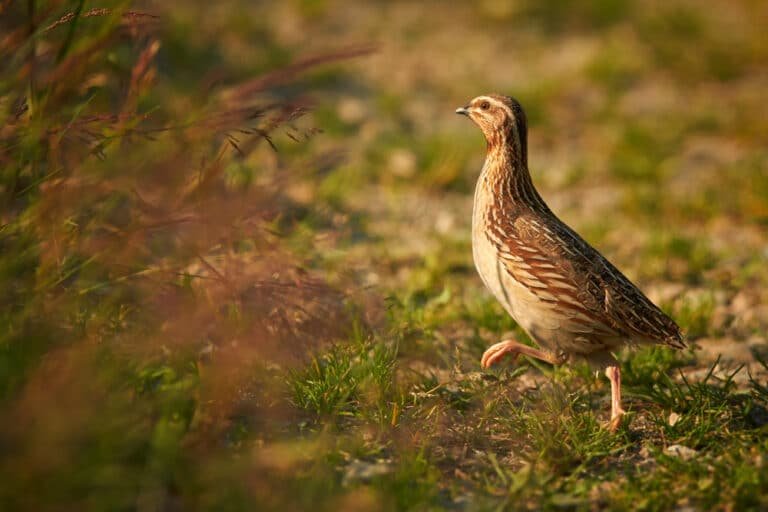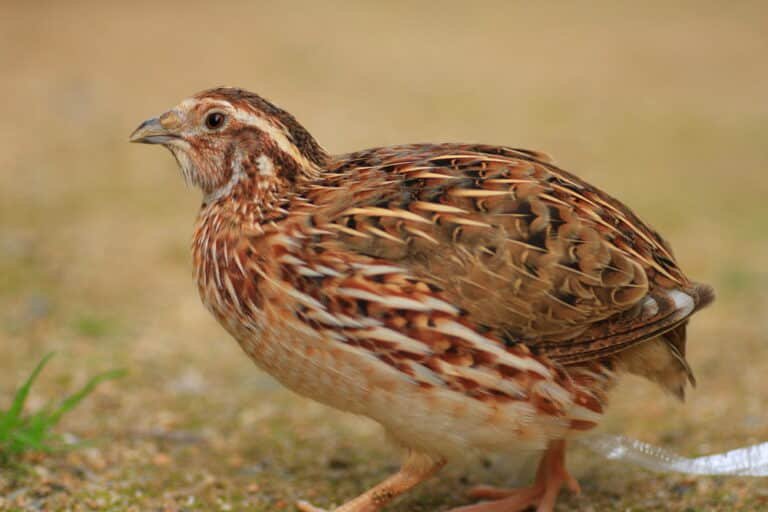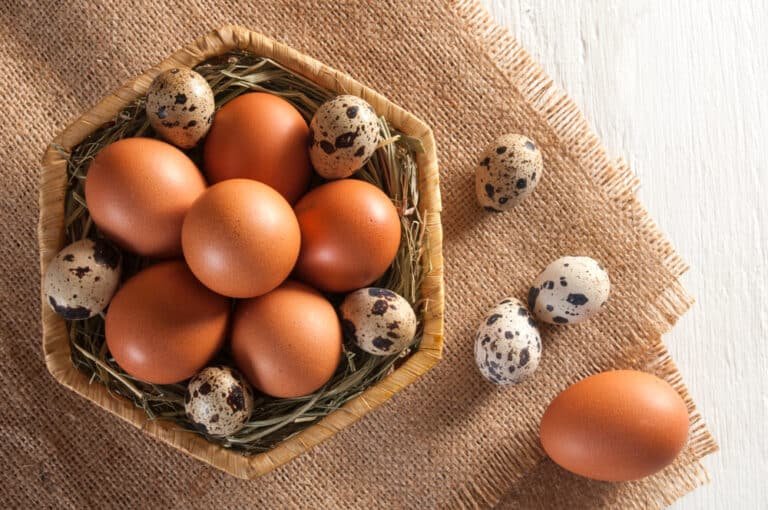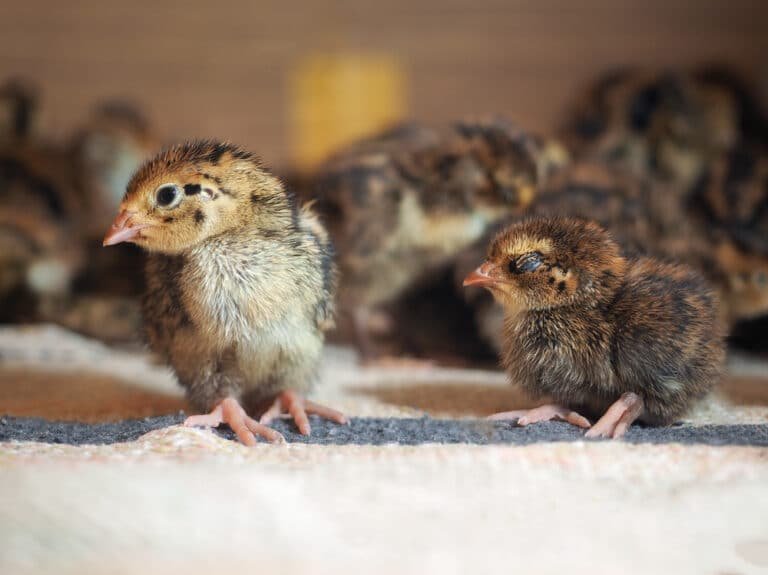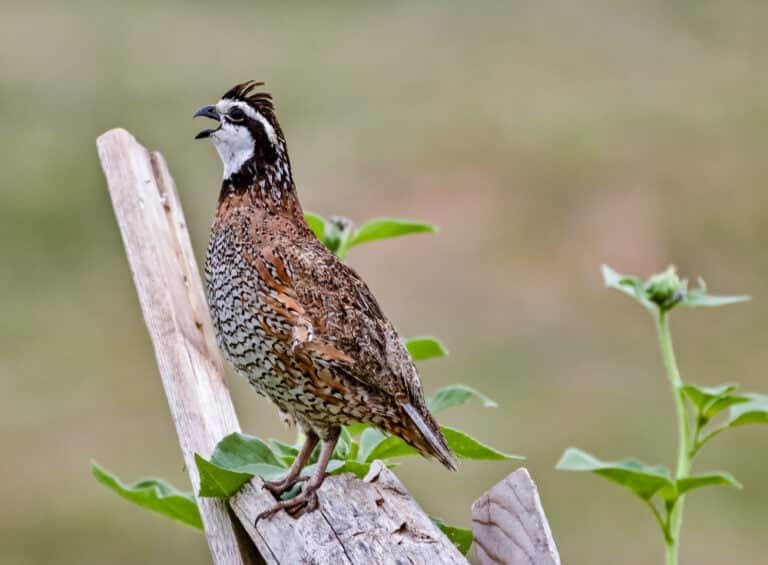Quail Coop: What You Need to Know Now
Quail, those small and charming game birds, have captivated humans for centuries. As these delightful creatures gain popularity as backyard pets and for their eggs and meat production, they must be provided with suitable living conditions. This is where the concept of a quail coop comes into play.
A quail coop is a specially designed enclosure that ensures these feathered friends’ comfort, safety, and well-being. In this article, we will explore the definition of a quail coop, delve into the significance of having a well-designed one, and provide an overview of the multiple benefits of raising quail.
Definition of a Quail Coop
A quail coop can be described as a purpose-built structure or enclosure that offers shelter and protection to quail while accommodating their unique needs. It serves as their home or sanctuary wherein they can engage in natural behaviors such as nesting, roosting, dust bathing, foraging, and socializing with their flock mates. The design and size of a quail coop may vary depending on factors like available space and the number of birds housed within it.
Importance of Having a Well-Designed Quail Coop
Having a well-designed quail coop is vital for several reasons. Firstly, it ensures your beloved quail have an environment promoting health and happiness.
A proper coop design considers essential factors such as ventilation to maintain optimal air quality inside the enclosure. Additionally, it offers protection against predators or other potential risks that might harm these delicate birds in an outdoor setting.
Furthermore, a well-designed quail coop facilitates easy maintenance by providing access points for cleaning and systems to manage waste effectively. This helps keep the living space hygienic and reduces the risk of spreading diseases.
Overview of the Benefits of Raising Quails
Raising quail can be incredibly rewarding, and the benefits extend beyond mere companionship. Quail offer a valuable source of fresh eggs and lean meat for those interested in sustainable and self-sufficient living. Quail eggs are known for their rich nutrient profile, including high protein content and essential vitamins and minerals.
Moreover, their compact size and delicate flavor make them a gourmet delight. Additionally, quail have relatively low space requirements compared to other poultry species, making them suitable for urban or suburban dwellers with limited land availability.
Their gentle nature makes them excellent pets for children or those seeking non-aggressive feathered companions. Understanding the concept of a quail coop is crucial when considering raising these wonderful birds.
A well-designed coop enhances your covey’s quality of life and ensures their safety and health. The multiple benefits of raising quail include fresh eggs, flavorful meat options, compact size requirements, and gentle companionship – all contributing to an enriched lifestyle.
Understanding Quails and Their Needs
Brief Description of Quails as Small Game Birds
Quail, delightful little creatures renowned for their dainty size and endearing nature, belong to the Phasianidae family, encompassing various species of small game birds. Poultry enthusiasts cherish these avian gems due to their delicate appearance, melodious calls, and delectable meat.
Although petite, quail can survive in diverse habitats, ranging from woodlands and grasslands to agricultural landscapes. With their plump bodies covered in soft feathers that exhibit an array of hues – from earthy browns to vibrant grays – quail epitomize elegance amidst nature’s mosaic.
Different Species of Quails Commonly Raised in Coops
Several species have gained popularity within quail farming due to their adaptability to captive rearing. The most commonly raised quail species include the Coturnix or Japanese quail (Coturnix japonica), the Bobwhite quail (Colinus virginianus), and the California or Valley quail (Callipepla californica).
Each possesses distinctive characteristics warrant consideration when selecting a suitable breed for coop-raising endeavors. The Coturnix quail is renowned for its fast maturity rate and high egg production capacity, making it ideally suited for commercial ventures.
On the other hand, the Bobwhite variety boasts a charming plumage pattern and resonant vocalizations that make it popular among hobbyists seeking aesthetically pleasing avian companions. The California quail captivates enthusiasts with its striking crest atop its head and friendly disposition.
Discussion on the Specific Needs and Behaviors of Quails
Understanding these lovely game birds’ specific needs and behaviors is integral to designing a quail coop that caters to their well-being. Quails exhibit various instinctive behaviors, such as nesting, roosting, and dust bathing, necessitating careful consideration during coop planning.
Nesting is a vital aspect of quail lives, with females exhibiting maternal instincts and seeking secure locations to lay their eggs. Providing appropriate nesting boxes ensures the safety and comfort necessary for successful breeding.
Additionally, quail are social creatures that thrive on roosting together in elevated perches during nighttime hours. Constructing roosting perches at optimal heights and spacing promotes their natural behavior but also aids in minimizing stress within the flock.
Moreover, quail engage in dust bathing—a ritualistic practice where they roll around in fine dust or loose soil—which serves as both a hygiene routine and a means to control parasites on their bodies. By comprehending the intricacies of quail behavior and addressing their specific needs within the design of a quail coop, enthusiasts can create an environment conducive to these delightful birds’ flourishing existence.
Designing the Ideal Quail Coop
Choosing the Right Location for Your Coop
Selecting the optimal location for your quail coop is crucial to ensure the health and well-being of your flock. When deciding on a location, there are several factors to consider.
Firstly, you need to provide adequate sunlight exposure for your quail. A spot that receives at least six hours of direct sunlight daily is ideal as it helps promote their overall growth and productivity.
Additionally, consider providing shade areas within or near the coop to enable quail to escape from excessive heat or extreme weather conditions. Secondly, predator protection is paramount in determining the location of your coop.
Avoid placing it near dense vegetation or trees where predators may hide or gain easy access. Instead, opt for an area that allows clear visibility and provides limited opportunities for predators to approach unnoticed.
Determining Appropriate Size and Space Requirements
The suitable size and space requirements for your quail coop largely depend on the number of birds you intend to keep. To ensure each quail has sufficient room to move comfortably, a general rule of thumb is to allocate at least one square foot per bird in smaller breeds like Japanese Coturnix quail and up to two square feet per bird in larger species such as California quail. Moreover, consider providing ample room for other essential features within the coop, including nesting boxes, roosting perches, and feeders/waterers.
Materials for Constructing a Sturdy and Predator-Proof Coop
Choosing suitable materials is crucial when constructing a sturdy and predator-proof quail coop. Two commonly used options are wood and wire mesh. Wood offers excellent insulation properties while providing a natural aesthetic appeal; however, it requires regular maintenance against rotting and can be susceptible to predator damage if not reinforced adequately.
On the other hand, wire mesh provides superior predator protection and ventilation, but it may not offer the same insulation properties as wood. Consider using a combination of woods for the framework and wire mesh for areas vulnerable to predator intrusion to strike a balance between insulation and security.
Advantages and Disadvantages of Different Materials
Using wood in your quail coop construction offers several advantages. It provides better thermal insulation properties, helping to maintain a more stable internal temperature during extreme weather conditions.
Wood also creates a natural environment that some quail may find more comforting. However, wooden structures require regular maintenance against rotting, which can be time-consuming and costly in the long run.
On the other hand, wire mesh is highly effective at preventing predators from accessing your quail coop while ensuring proper ventilation for the birds. However, it may not offer the same level of insulation as wood and might require additional measures during cold weather to maintain warmth.
Tips on Ensuring Proper Ventilation within the Coop
Proper ventilation is crucial within a quail coop to maintain good air quality and prevent the buildup of harmful ammonia or excessive heat/humidity levels. One effective strategy is incorporating windows or vents with adjustable openings that allow fresh air circulation while controlling drafts during colder months. Ensure these openings are covered with appropriate-sized wire mesh to prevent predators from entering or disturbing your quail.
Additionally, consider placing vents strategically at different heights within the coop to facilitate airflow throughout all areas, reducing condensation and enhancing overall comfort for your covey. By considering each aspect mentioned above in designing your quail coop, you will create an ideal living space that supports their health, safety, and productivity while ensuring optimal comfort levels all year round.
Essential Features of a Functional Quail Coop
Nesting boxes: Size, number, and placement considerations
Nesting boxes are an essential feature of a well-designed quail coop, providing a secure and comfortable space for quail to lay their eggs. The nesting boxes should be appropriate for the quail size, typically around 6-8 inches square. It is important to have enough nesting boxes to accommodate all the hens in your covey, allowing for at least one box per three or four hens.
Placing the nesting boxes in a quiet, secluded coop area will ensure hens’ privacy during egg-laying. Additionally, providing bedding material, such as straw or wood shavings, inside each box will create a cozy environment that mimics their natural habitat.
Roosting perches: Optimal height and spacing for lounging
Quail also require roosting perches within their coop where they can rest comfortably off the ground. These perches should be positioned at an optimal height of about 6-8 inches above the floor to prevent excessive pressure on their feet while roosting. Spacing between perches should allow enough room for each bird to perch comfortably without overcrowding or causing stress.
A general guideline is to provide around 4-6 inches of space per bird on each perch, ensuring ample room to spread their wings. Using smooth, rounded dowels or branches as perching material will offer a more comfortable grip than narrow or rough surfaces.
Flooring options: Deep litter method vs. wire flooring
The choice between deep litter flooring and wire flooring depends on various factors such as cleanliness, ease of maintenance, and bird health considerations. The deep litter method involves adding layers of organic materials like straw, wood shavings, or dried leaves to the coop floor. This system provides a natural environment for the quail, allowing them to exhibit natural scratching and foraging behaviors.
The organic materials absorb moisture, control odor, and provide insulation during colder months. However, deep litter requires regular cleaning and monitoring to prevent ammonia buildup and harmful bacteria.
Alternatively, some quail keepers prefer wire flooring for easy cleaning and maintenance. Wire flooring allows droppings to fall through, keeping the birds above any waste material.
This method ensures cleaner eggs and reduces the risk of disease transmission. However, wire flooring can be uncomfortable for quail feet if not properly designed with appropriate spacing between wires.
Pros and cons of each option
The deep litter method offers a more natural environment for behavioral enrichment and better insulation against cold weather conditions. It also reduces the risk of foot injuries compared to wire flooring.
However, it requires regular cleaning to prevent health issues caused by excessive ammonia buildup. On the other hand, wire flooring is easier to clean and helps maintain better hygiene within the coop.
It prevents contact with droppings, reducing the chance of diseases spreading among quail. However, improper design or spacing between wires can lead to foot problems or bumblefoot in quail.
Special considerations for chicks or injured/quarantined birds
Additional considerations must be considered when raising chicks or caring for injured/quarantined birds in a quail coop. Nesting boxes should have lower entry points or ramps for younger birds that may struggle with higher perches initially.
Providing extra bedding material can make it easier for chicks with less developed feathers to regulate their body temperature effectively. Injured/quarantined birds may require separate enclosures within the coop or smaller sections to rest undisturbed while healing or being observed closely by their caretakers.
This ensures their well-being and prevents potential conflicts with other covey members. Adding dividing panels or smaller sections with their nesting boxes and perches can facilitate the care and recovery of these birds while still being part of the larger coop setup.
The Importance of Security Measures
Predator-proofing techniques
Predator-proofing techniques play a crucial role in ensuring your quail safety. One effective method is utilizing hardware cloth or welded wire mesh. These materials provide durable barriers that deter common predators such as raccoons and snakes from accessing the coop.
Selecting a mesh size that prevents even the smallest intruders from squeezing through is important. Securely fastening these materials around all openings, including windows and vents, will reinforce the coop’s defense against potential threats.
Effective door latches
Night time increases the risk for nocturnal predators seeking access to your quail coop. Hence, it becomes imperative to have robust door latches in place to prevent break-ins.
Choose sturdy locks or latches that ensure doors are tightly secured during nighttime when your quail are more vulnerable to attacks. Regularly inspecting and maintaining these mechanisms is essential, as wear and tear can compromise their effectiveness over time.
Electric fencing options
For those looking for an extra layer of security, electric fencing can provide peace of mind by actively deterring potential predators from entering the quail coop area. The electrified wires deliver a harmless but startling shock upon contact, effectively discouraging animals from getting too close.
Proper installation is crucial, ensuring the fence is grounded correctly and has appropriate voltage levels to effectively repel intruders without causing harm.
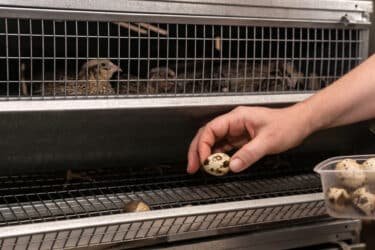
Conclusion
As responsible quail keepers, prioritizing security measures within your quail coop is paramount to safeguarding the well-being and safety of your covey.
You can create a fortified fortress that wards off potential threats by implementing predator-proofing techniques using hardware cloth or welded wire mesh, securing doors with effective latches, and considering electric fencing for enhanced protection.
Remember, a secure quail coop provides physical protection and peace of mind, allowing you to fully enjoy the rewarding experience of raising these charming game birds.






